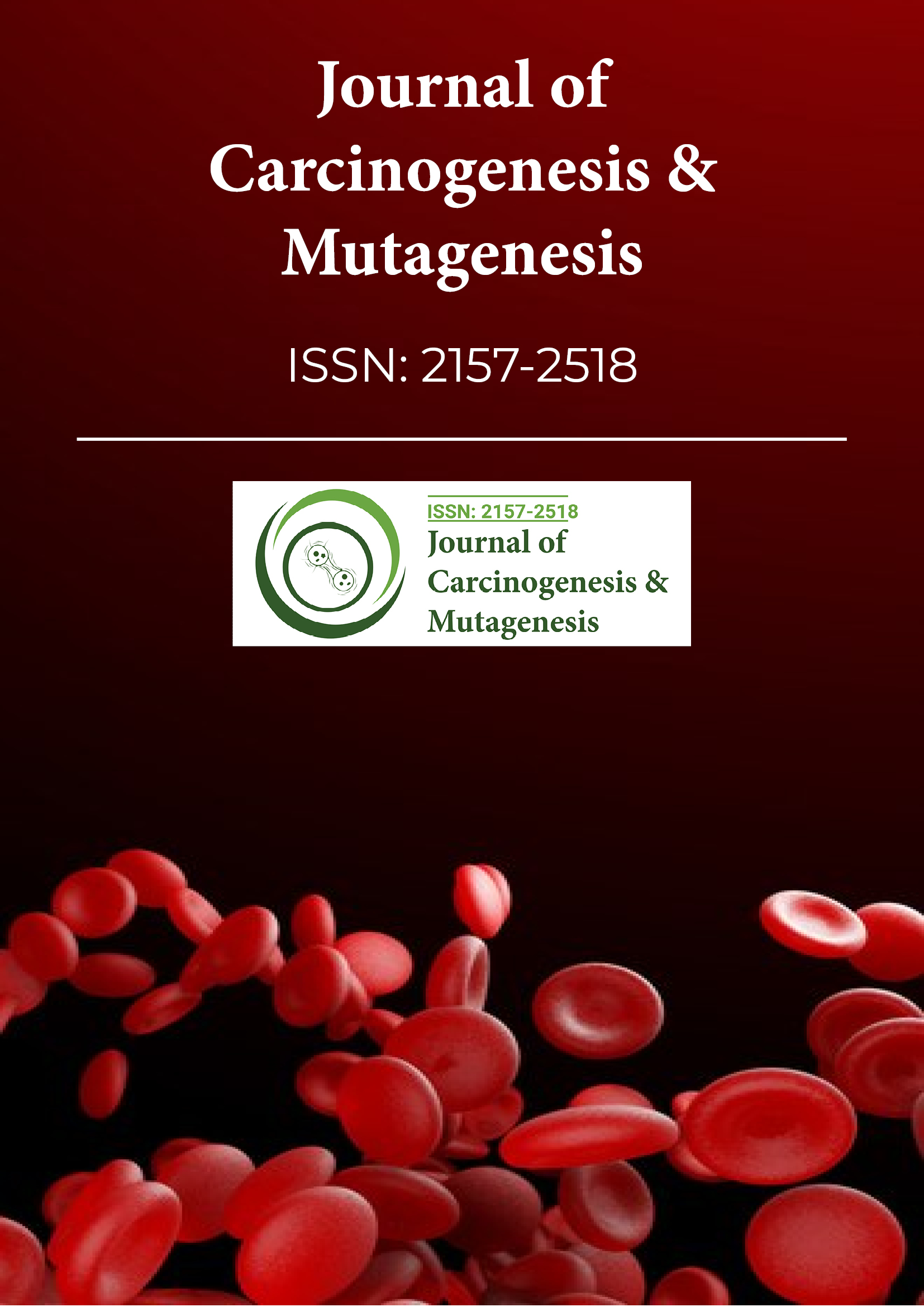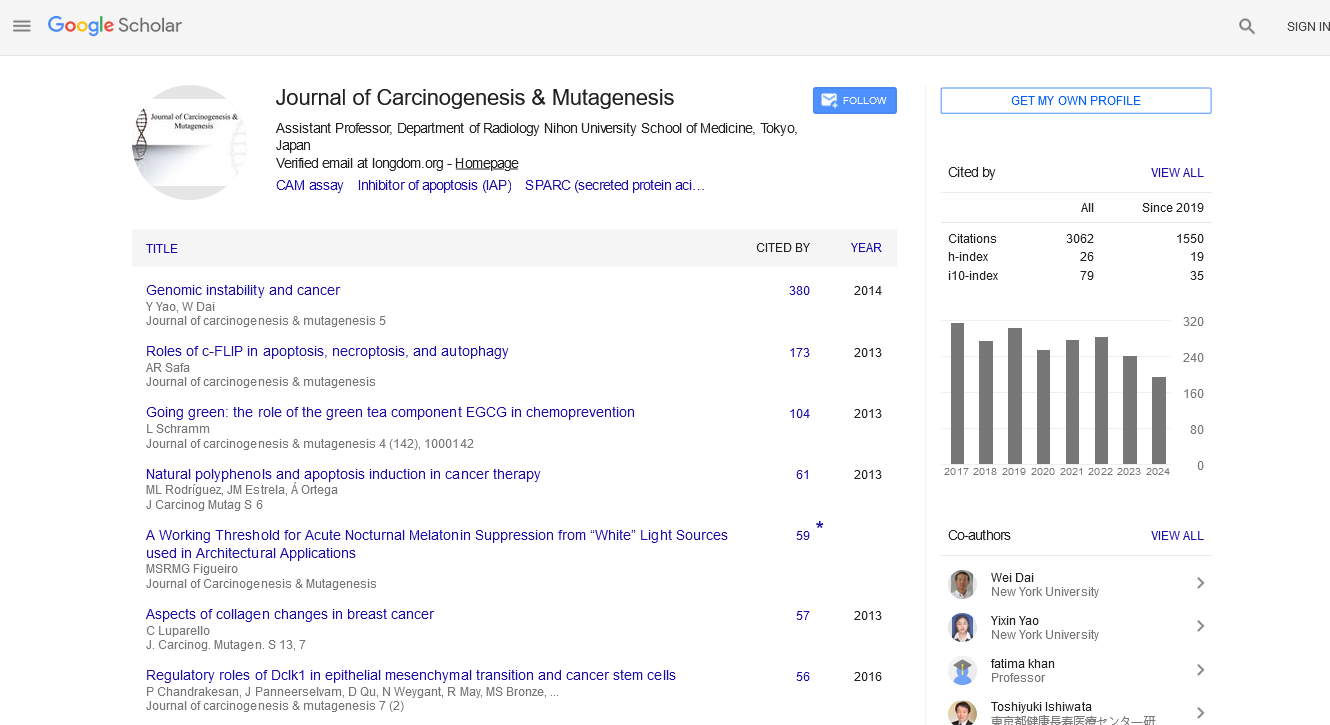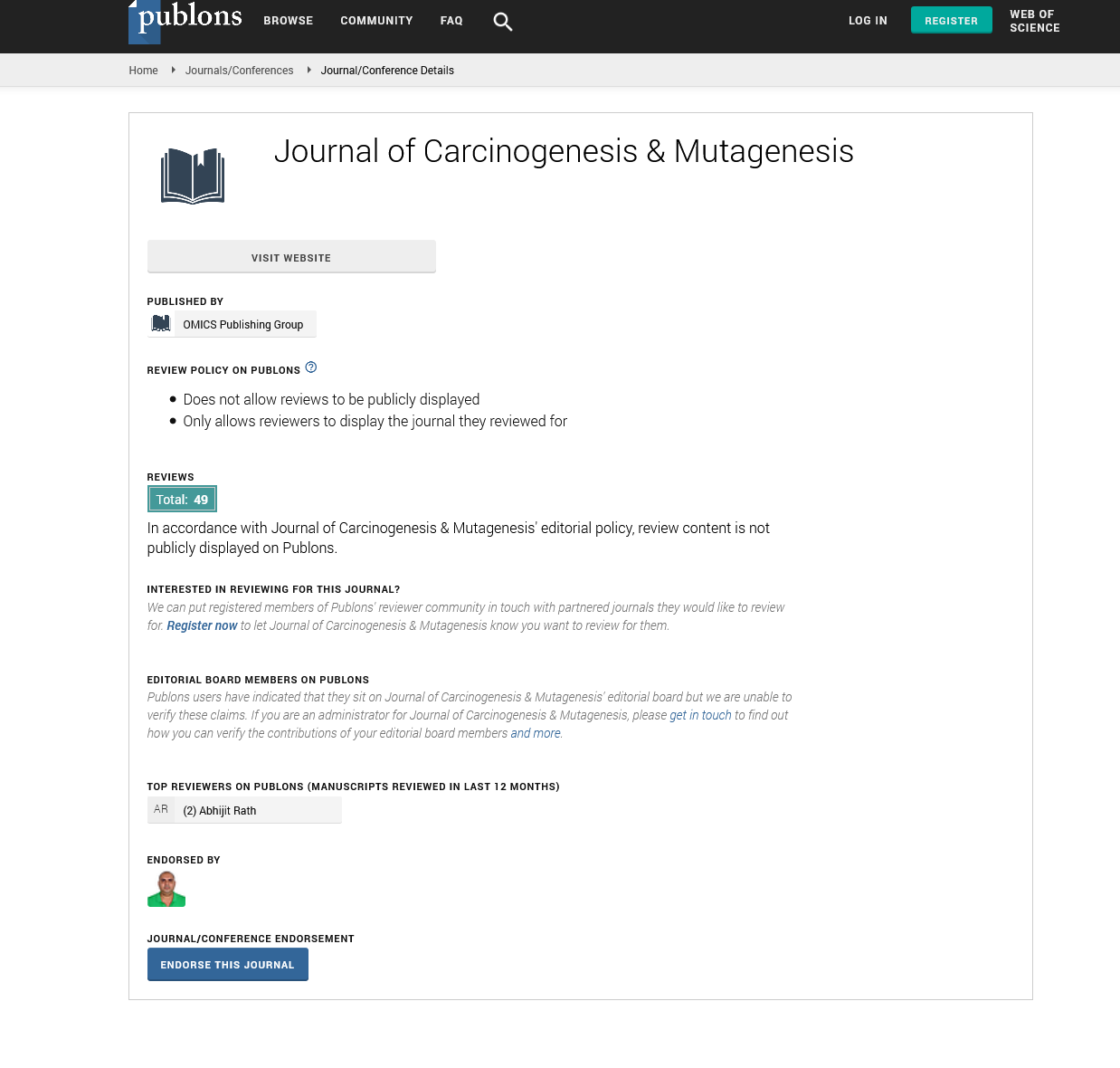Indexed In
- Open J Gate
- Genamics JournalSeek
- JournalTOCs
- Ulrich's Periodicals Directory
- RefSeek
- Hamdard University
- EBSCO A-Z
- OCLC- WorldCat
- Publons
- Geneva Foundation for Medical Education and Research
- Euro Pub
- Google Scholar
Useful Links
Share This Page
Journal Flyer

Open Access Journals
- Agri and Aquaculture
- Biochemistry
- Bioinformatics & Systems Biology
- Business & Management
- Chemistry
- Clinical Sciences
- Engineering
- Food & Nutrition
- General Science
- Genetics & Molecular Biology
- Immunology & Microbiology
- Medical Sciences
- Neuroscience & Psychology
- Nursing & Health Care
- Pharmaceutical Sciences
Perspective - (2024) Volume 15, Issue 4
Detailed Analysis of Clinical Implications in Signal Transduction
Grossman Rola*Received: 01-Jul-2024, Manuscript No. JCM-24-26680; Editor assigned: 03-Jul-2024, Pre QC No. JCM-24-26680 (PQ); Reviewed: 17-Jul-2024, QC No. JCM-24-26680; Revised: 24-Jul-2024, Manuscript No. JCM-24-26680 (R); Published: 01-Aug-2024, DOI: 10.35248/2157-2518.24.15.452
Description
Signal transduction is a fundamental process in cellular biology that involves the transmission of molecular signals from a cell's exterior to its interior, leading to a cellular response. This process is critical for cells to adapt to their environment, communicate with other cells, and maintain homeostasis. Signal transduction pathways are complex and involve a series of molecular events that convert a signal on a cell's surface to a specific response within the cell.
Overview of signal transduction
The process of signal transduction begins when an extracellular signaling molecule, or ligand, binds to a specific receptor on the cell membrane. This binding event triggers a series of intracellular events, often involving a cascade of protein interactions and modifications. The main stages of signal transduction include signal reception, transduction, and response.
Signal reception: This initial stage involves the binding of the signaling molecule to its receptor. Receptors are typically proteins located on the cell surface or within the cell. These receptors can be classified into various types, such as G Protein-Coupled Receptors (GPCRs), Receptor Tyrosine Kinases (RTKs), and ion channel receptors. The binding of the ligand induces a conformational change in the receptor, which activates its signaling capability.
Signal transduction: Following the activation of the receptor, the signal is transduced into the cell through a series of molecular interactions. This often involves the activation of secondary messengers such as Cyclic AMP (cAMP), Inositol Triphosphate (IP3), and calcium ions. These secondary messengers propagate the signal by activating other proteins, such as kinases and phosphatases, which further amplify the signal. Protein kinases, such as Mitogen-Activated Protein Kinases (MAPKs) and Protein Kinase A (PKA), play a important role in phosphorylating target proteins, thereby modifying their activity.
Cellular response: The final stage of signal transduction results in a specific cellular response. This response can include changes in gene expression, alterations in cellular metabolism, cell growth and division, or programmed cell death (apoptosis). The precise nature of the response depends on the type of cell, the receptors involved, and the signaling pathway activated.
Key signal transduction pathways
Several well-characterized signal transduction pathways are critical for various cellular functions:
GPCR pathway: G protein-coupled receptors are involved in many physiological processes. Upon ligand binding, GPCRs activate G proteins by exchanging GDP for GTP on the Gα subunit. This activation leads to the dissociation of the Gα subunit from the Gβγ dimer, which can then activate downstream effectors such as adenylyl cyclase, phospholipase C, and ion channels.
RTK pathway: Receptor tyrosine kinases, such as the Epidermal Growth Factor Receptor (EGFR), are involved in regulating cell growth and differentiation. Ligand binding induces receptor dimerization and auto phosphorylation, which creates docking sites for intracellular signaling proteins. These proteins, such as the Ras-MAPK pathway components, transduce the signal to the nucleus, influencing gene expression.
Notch signaling: This pathway is important for cell fate determination and development. The binding of a Notch ligand to the Notch receptor leads to proteolytic cleavage and release of the Notch Intracellular Domain (NICD). NICD translocate to the nucleus and interacts with transcription factors to regulate gene expression.
Regulation and specificity of signal transduction
Signal transduction pathways are tightly regulated to ensure specificity and prevent aberrant signaling. Several mechanisms contribute to this regulation:
Feedback loops: Both positive and negative feedback loops modulate the intensity and duration of the signal. Negative feedback, for example, can involve the production of phosphatases that dephosphorylate and inactivate kinases.
Scaffold proteins: These proteins organize signaling components into complexes, ensuring that the correct proteins interact at the right place and time.
Compartmentalization: Signaling events are often confined to specific cellular compartments, such as lipid rafts in the plasma membrane or specific organelles, to enhance efficiency and specificity.
Clinical relevance
Dysregulation of signal transduction pathways is implicated in various diseases, including cancer, diabetes, and neurodegenerative disorders. Understanding these pathways can lead to the development of targeted therapies. For example, inhibitors of RTKs, such as trastuzumab for Human Epidermal Growth Factor Receptor 2 (HER2)-positive breast cancer, have been successful in treating specific types of cancer.
Conclusion
Signal transduction is a complex and highly regulated process that enables cells to respond appropriately to their environment. By elucidating the molecular details of these pathways, researchers can develop novel therapeutic strategies to combat diseases resulting from signaling abnormalities.
Citation: Rola G (2024) Detailed Analysis of Clinical Implications in Signal Transduction. J Carcinog Mutagen. 15:452.
Copyright: © 2024 Rola G. This is an open-access article distributed under the terms of the Creative Commons Attribution License, which permits unrestricted use, distribution, and reproduction in any medium, provided the original author and source are credited.


